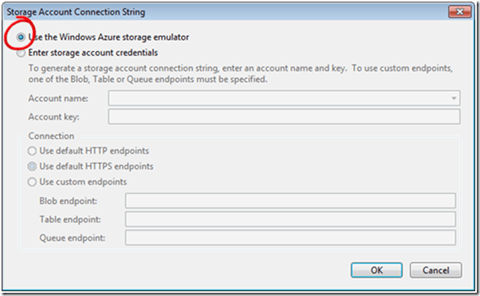

- AZURE STORAGE EMULATOR OPENDS.DLL MANUALS
- AZURE STORAGE EMULATOR OPENDS.DLL INSTALL
- AZURE STORAGE EMULATOR OPENDS.DLL UPDATE
- AZURE STORAGE EMULATOR OPENDS.DLL WINDOWS
\nssm.exe install az_fabric C:\app\devfabric_service.cmd \nssm.exe set az_storage Start service_auto_start \nssm.exe set az_storage ObjectName 'domain1\octopussy' 'PWD' \nssm.exe install az_storage C:\app\storage_service.cmd Once the commands files are in place, define and start the services. "C:\Program Files\Microsoft SDKs\Azure\Emulator\csrun.exe" /devfabric

"C:\Program Files (x86)\Microsoft SDKs\Azure\Storage Emulator\WAStorageEmulator.exe" start There are several ways to do this, and I choose to use the Non-sucking service manager.įirst, create a command file that starts the emulator and never quits: Therefore, you should set them up to run as services. In a test environment, we need the emulators to keep running. If you remotely log in to a computer and start the emulators, they will shut down when you log off. In a normal development situation, the emulator run as the logged in user.
AZURE STORAGE EMULATOR OPENDS.DLL WINDOWS
In order for the Octopus Deploy tentacle to be able to run the deployment, the tentacle service must run as the aforementioned user account:Ĭreating windows services for storage and compute emulators

(You know, that James Bond movie.) Then, I made sure that that user was a local admin on the test machine by running net localgroup administrators domain1\octopussy /add I decided to create a domain managed service account named “octopussy” for this. In a development setting, this is currently logged in user on the computer, but in a test environment case, this is not so. The first problem I ran into was concerning which user should run the deployment scripts. Storage emulator: C:\Program Files (x86)\Microsoft SDKs\Azure\Storage Emulator You’ll need them later on: Compute emulator: C:\Program Files\Microsoft SDKs\Azure\Emulator Take note of the installation paths for the emulators. This is available in the Microsoft web platform installer (): I used the currently (September 2014) latest version of the Microsoft Azure SDK, version 2.4. Installing the SDKįirst of all, let’s install the necessary software. This step consists of preparing the test environment for running the emulators. | | | (Team City) | | (Octopus) | | (Storage emulator) | | Dev machine +-> Build server +-> Deploy server +-> (Compute emulator) | We will do the deployment using Octopus Deploy: +-+ +-+ +-+ +-+-+ So the basic setup that I will explain in this blog post is to build a package for deployment in the compute emulator on the Team City build server. I try to summarize them all in this post. There were quite a few hurdles in the way to do this. I will not go into exactly why this was needed, but it could be a possible interim solution to try out the technology before your customer make the decision to establish an environment in Azure. On my current project, I ran into the need to install and run the emulator in the test environment. You need to design a data access plan that meets all these requirements and allows all data to be managed within the SharePoint 2010 system.The Azure compute and storage emulators enable testing and debugging of Azure cloud services on the developer’s local computer. Enforce relationships that allow cascade deletes of items from the machine parts list when items are deleted from the machine list, but prevent data in the machine parts list from being orphaned.
AZURE STORAGE EMULATOR OPENDS.DLL UPDATE
Allow non-technical users to update the individual list data and views, as well as to update the manuals.

Enforce relational integrity between the data to create custom views for various business users.
AZURE STORAGE EMULATOR OPENDS.DLL MANUALS
The application must: Establish links between the factory machine data, the machine part inventory, the maintenance history, and the repair manuals to allow the display of additional fields from the other lists. This information includes an inventory of parts, the machine's maintenance history, and a document library of repair manuals for each machine in Microsoft Word format. # You are designing a SharePoint 2010 application that stores information about each machine in a factory.


 0 kommentar(er)
0 kommentar(er)
